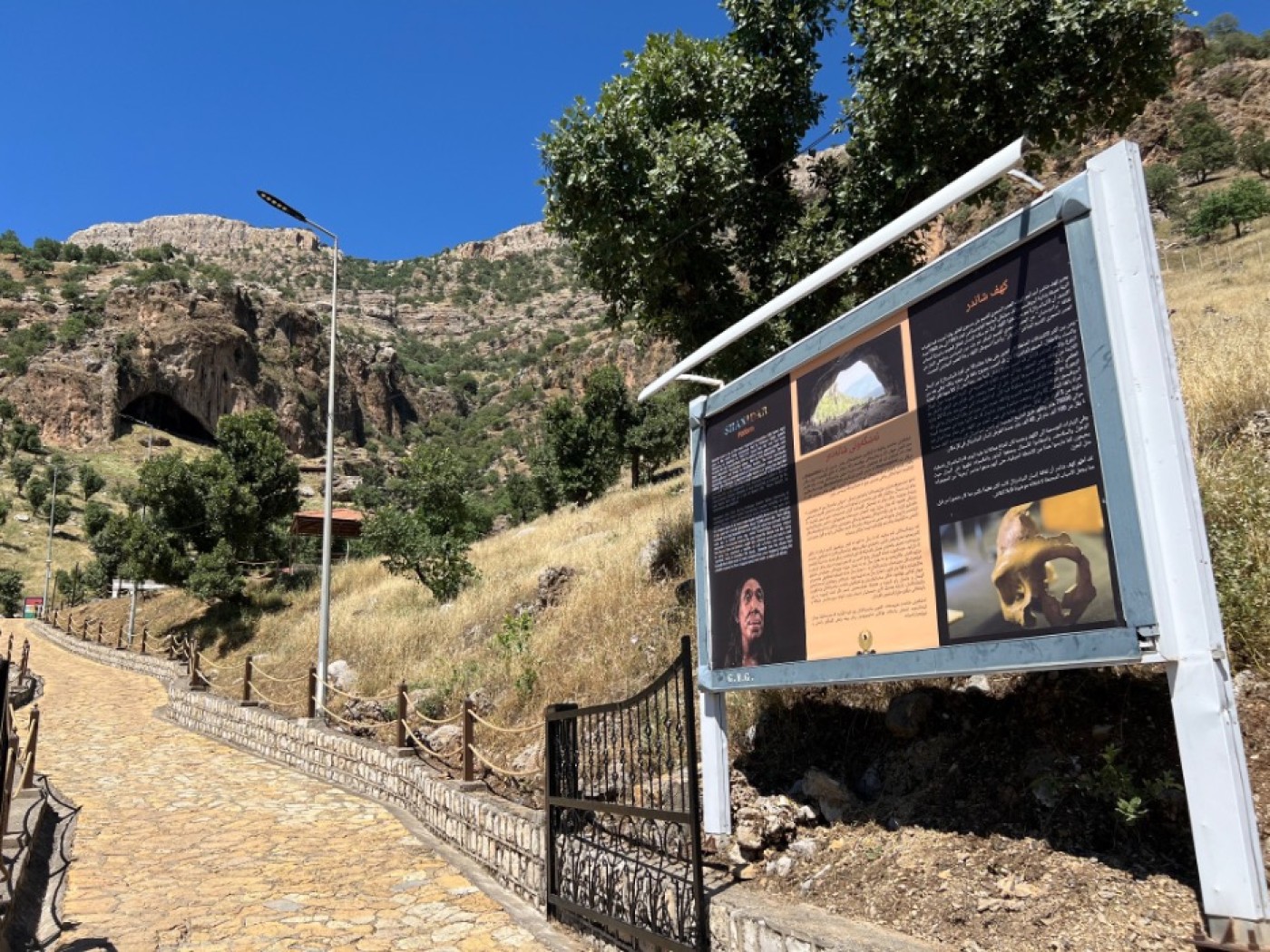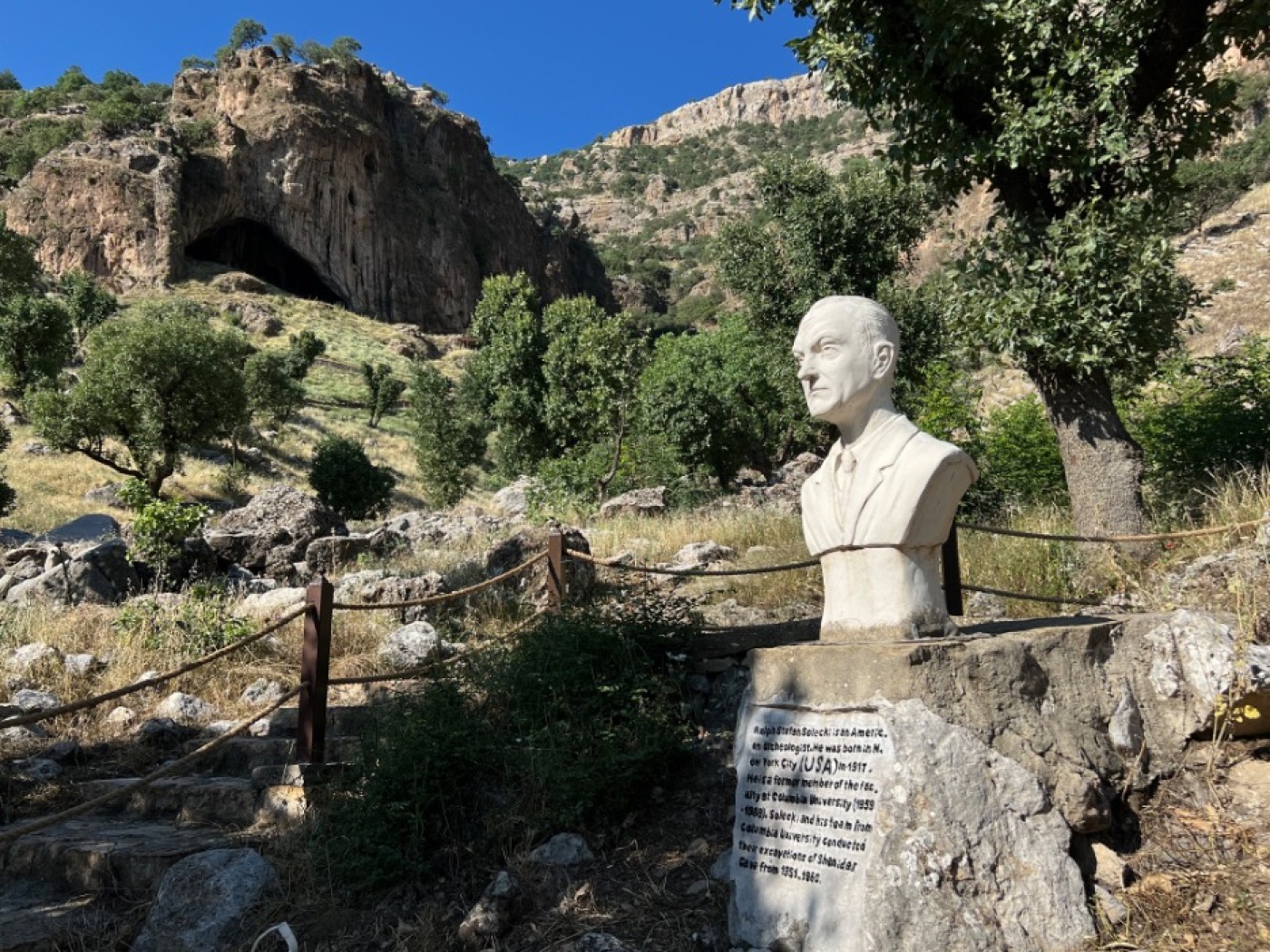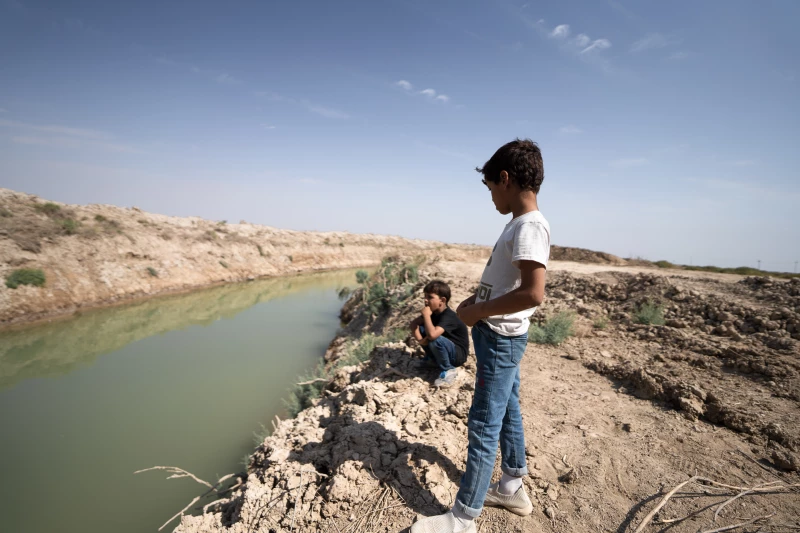Located in the midst of the biodiverse region of Barzan, just a two-hour drive from the Kurdistan Region’s capital of Erbil, lies the Shanidar cave, home to life for over a hundred thousand years.
The month of May in Iraq is not like May in many other places. The sun is scorching and in many southern provinces, temperature exceeds 35 degrees Celsius, but not in the Kurdistan Region’s mountainous Barzan.
As we were driving through the region, we felt little need to turn on our car’s cooling system, unlike how we felt when we took off from Erbil.
On the road to Shanidar, you could see different forms of wildlife, many of which we were seeing for the first time in our lives.
That was our first sign, perhaps that is why Shanidar has been a shelter for so many living beings for so long.
As you arrive at the foothills of the mountain where Shanidar is, you can see that the area surrounding it has been transformed into a small national park, with roads and stairways leading up to the cave.
There stood a huge sign, offering information on the cave and the Neanderthal remains found inside it.

When we arrived at Shanidar, Professor Graeme Barker and his team from Cambridge University were closing shop as they would call it, the excavation season was coming to an end.
For the past ten years, Barker has been leading an excavation at Shanidar. His work has now increased our understanding of Neanderthal life.
During their stay this year, Barker’s team have been working on excavating a part of Shanidar that could answer questions about a transitional period where Neanderthals started going extinct and early homo-sapiens rose to the scene.
“We can see from Professor Solecki’s photographs that there was some soil here that ought to span the period where Neanderthals stopped coming to the cave and they died out everywhere about 40,000 years ago, and our species homo-sapiens started coming to the cave,” Barker told The New Region on May 23.
Shanidar was first excavated in the early 1950s by American archaeologist Ralph Solecki.
At the time, Solecki found several Neanderthal remains, among them the renowned flower burial.
As you walk up the trail leading to Shanidar, you can see a sculpture of Solecki put there by the Kurdistan Region’s authorities as a tribute to his work.

Solecki’s idea then was that the Neanderthals, very much like modern humans, buried their dead and mourned them by laying them on some sort of a flower bed, a theory that has since been rejected by many archaeologists who have studied Neanderthal behavior.
However, his sentiment might not have been all false according to Barker, for Neanderthals are believed to share many similarities with modern humans, including the knowledge to care for their dead.
Such similarities can be seen through the different bones and remains of the Neanderthals found in the cave over the years, which indicate that generations of Neanderthals would head back to Shanidar and lay to rest a member of their group at the cave every time they are back.
“It is not a symmetry, they are not coming at one time, it looks from the soil between and the work we have done that it is probably over several generations,” Barker said, referring to the remains that have been found.
Pointing to a rock inside the cave, Barker suggested that they might have used it as a marker to know where they have put their dead to rest.
“They are coming back to the same place, they are placing the bodies behind this prominent marker, and it looks like they are doing it over several generations,” he said. “In the case of Shanidar Z, we know that they were preparing where they put her.”
“There is some memory and culture to how you deal with the dead,” Barker added. “That is completely unique in Neanderthal studies.”
Barker said that oftentimes, this has led people to wonder if Neanderthals had religion, but even if they did, it is not in the same sense that modern humans understand it.
“On the other hand they are clearly thinking about death.”
Before Solecki’s venture at Shanidar, little was known to the local community about the history of the cave.
To many, it was just a shelter for shepherds and Kurdish freedom fighters over the many decades, but little did they know that under the very soil they were standing on, there were remains that would change the perception of history.
“Shanidar cave was not famous around the world, the people in the region only knew that it was used by shepherds for their sheep, people from here used it as a place for their flock to rest for many years,” Sherzad Hassan, a local from the area who now helps the excavation team as a representative from the Kurdistan Regional Government (KRG), told The New Region.
However, following Solecki’s findings, Shanidar became globally known.
The cave rose to the spotlight again in 2024, when the face of Shanidar Z was reconstructed, a middle-aged Neanderthal woman whose remains were found during the 2018 and 2019 excavation seasons.
Associate Professor in the Evolution of Health, Diet and Disease, Dr Emma Pomeroy, poses for a photograph with the rebuilt skull and a physical reconstruction of the face and head, of a 75,000-year-old Neanderthal woman, named Shanidar Z. (Photo by Justin TALLIS / AFP)
Now, people visit the cave on weekends not only to see the beautiful nature of the region, but also to learn more about its history.
Barker came to excavate Shanidar upon the request of the KRG, something that he still does not know how it ended up on his desk, but he was fascinated by the idea of excavating Shanidar after so many years since it was last excavated.
According to Barker, there is more the KRG could do to further promote the history and heritage that Shanidar holds, that would start by applying for it to become a UNESCO World Heritage site.
“Kurdistan has got one UNESCO World Heritage site, the citadel in Erbil, this has got the potential to be a second World Heritage site,” Barker said. “The definition of world heritage is that it has got to have universal value, and Shanidar cave has universal value.”
“I know it is critical to Kurdish heritage, and everybody has taken Shanidar Z into their hearts as the mother of Kurdistan,” he added. “This is a critical part of their heritage, it is a site to treat with enormous respect, it is a site that every child in a Kurdistan school should know about, should know the story.”



 Facebook
Facebook
 LinkedIn
LinkedIn
 Telegram
Telegram
 X
X


